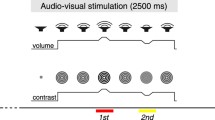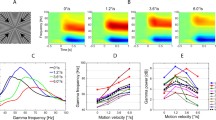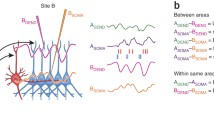Abstract
The idea that gamma enhancement reflects a state of high neuronal excitability and synchrony, critical for active brain operations, sets gamma up as a “master” or executor process that determines whether an input is effectively integrated and an effective output is generated. However, gamma amplitude is often coupled to the phase of lower frequency delta or theta oscillations, which would make gamma a “slave” to lower frequency activity. Gamma enslavement is productive and typical during rhythmic mode brain operations; when a predictable rhythm is in play, low and mid-frequency oscillations can be entrained and their excitability fluctuations of put to work in sensory and motor functions. When there is no task relevant rhythm that the system can entrain to, low frequency oscillations become detrimental to processing. Then, a continuous (vigilance) mode of operation is implemented; the system’s sensitivity is maximized by suppressing lower frequency oscillations and exploiting continuous gamma band oscillations. Each mode has costs and benefits, and the brain shifts dynamically between them in accord with task demands.

Similar content being viewed by others
References
Borgers C, Kopell NJ (2008) Gamma oscillations and stimulus selection. Neural Comput 20:383–414
Buzsaki G, Draguhn A (2004) Neuronal oscillations in cortical networks. Science 304:1926–1929
Canolty RT, Edwards E, Dalal SS, Soltani M, Nagarajan SS, Kirsch HE, Berger MS, Barbaro NM, Knight RT (2006) High gamma power is phase-locked to theta oscillations in human neocortex. Science 313:1626–1629
Fries P, Nikolic D, Singer W (2007) The gamma cycle. Trends Neurosci 30(7):309–316 (Ref Type: Abstract)
Garcia-Lazaro JA, Ahmed B, Schnupp JW (2006) Tuning to natural stimulus dynamics in primary auditory cortex. Curr Biol 16:264–271
Lakatos P, Shah AS, Knuth KH, Ulbert I, Karmos G, Schroeder CE (2005) An oscillatory hierarchy controlling neuronal excitability and stimulus processing in the auditory cortex. J Neurophysiol 94:1904–1911
Lakatos P, Chen CM, O’Connell MN, Mills A, Schroeder CE (2007) Neuronal oscillations and multisensory interaction in primary auditory cortex. Neuron 53:1–14
Lakatos P, Karmos G, Mehta AD, Ulbert I, Schroeder CE (2008) Oscillatory entrainment as a mechanism of attentional selection. Science 320:110–113
Mukamel R, Gelbard H, Arieli A, Hasson U, Fried I, Malach R (2005) Coupling between neuronal firing, field potentials, and FMRI in human auditory cortex. Science 309:951–954
Niessing J, Ebisch B, Schmidt KE, Niessing M, Singer W, Galuske RA (2005) Hemodynamic signals correlate tightly with synchronized gamma oscillations. Science 309:948–951
Pfurtscheller G, Neuper C, Kraut M (2000) Functional dissociation of lower and upper frequency mu rhythms in relation to voluntary limb movement. Clin Neurophysiol 111:1873–1879 (Ref Type: Abstract)
Pineda JA (2005) The functional significance of mu rhythms: translating “seeing” and “hearing” into “doing”. Brain Res Brain Res Rev 50:57–68
Schroeder CE, Lakatos P (2009) Low frequency oscillations as instruments of sensory selection. Trends Neurosci 32(1):9–18
Schroeder CE, Lakatos P, Kajikawa Y, Partan S, Puce A (2008) Neuronal oscillations and visual amplification of speech. TIC 12:106–113
Author information
Authors and Affiliations
Corresponding author
Additional information
This article is one of five on the “Special Topic: Discussing Gamma” in issue 21(3) of Brain Topography.
Rights and permissions
About this article
Cite this article
Schroeder, C.E., Lakatos, P. The Gamma Oscillation: Master or Slave?. Brain Topogr 22, 24–26 (2009). https://doi.org/10.1007/s10548-009-0080-y
Received:
Accepted:
Published:
Issue Date:
DOI: https://doi.org/10.1007/s10548-009-0080-y




